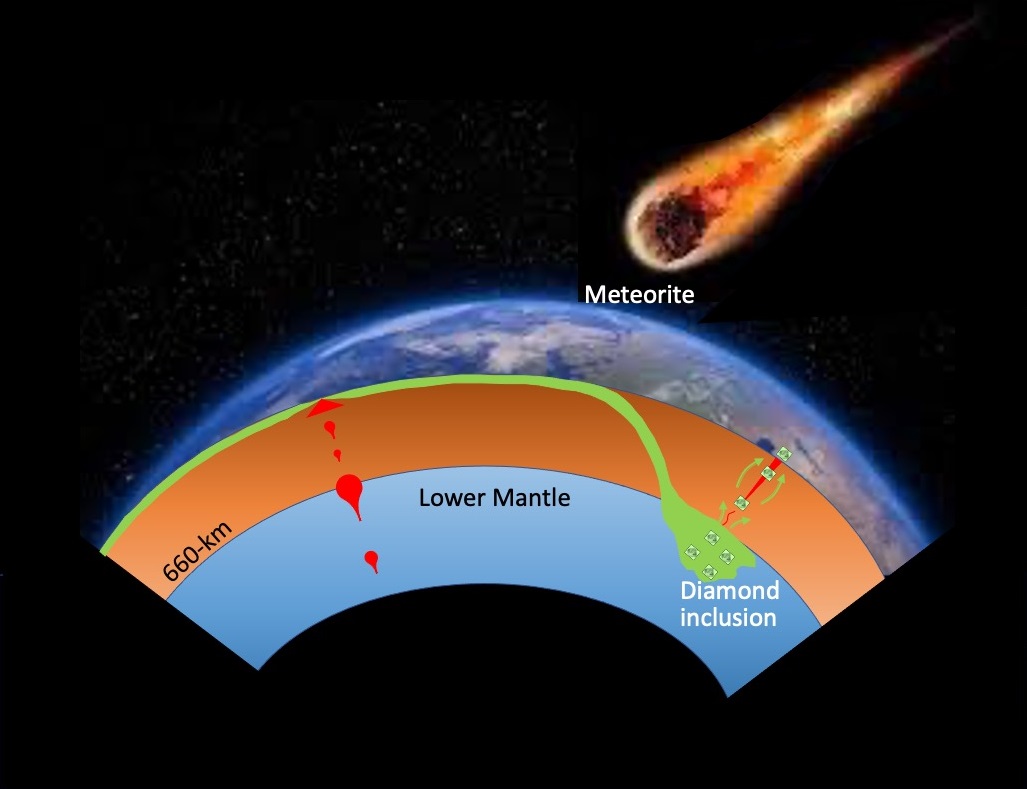Washington, DC—The first-ever silicate mineral recovered from the Earth’s lower mantle has been named after retired Carnegie scientist Ho-kwang “Dave” Mao, an experimental geophysicist whose work redefined our understanding of how materials behave under the extreme pressure and temperature conditions found inside Earth and other planets.
A team led by the University of Nevada Las Vegas’ Oliver Tschauner reported the discovery in Science this week and Carnegie’s Yingwei Fei wrote an accompanying essay in the same issue, contextualizing the importance of the work and the significance of the chosen name—davemaoite.
In 1976 Mao and colleagues were the first to bring materials to a million times atmospheric pressure, doubling the previous pressure limit. This momentous breakthrough transformed our understanding of the chemistry of Earth’s interior and behavior of materials under extreme pressure. Over a career spanning five decades he continually redefined the boundaries of pressure at which materials could be probed, and his discoveries had implications for understanding the chemistry and physics occurring deep below Earth’s surface, our planet’s evolutionary history, the interior dynamics of distant worlds, and materials science.
“This honor is a fitting tribute given the profound impact Dave’s work has had throughout the geosciences,” said Earth and Planets Laboratory Director Richard Carlson. “His contributions have shaped our understanding of our world and now a piece of the world will forever bear his name.”
Many materials that form under extreme pressures cannot retain their structures when brought to ambient conditions, which is what makes this discovery so exciting. Davemaoite, which was discovered encased inside a super-deep diamond, is only the second high-pressure mantle silicate ever seen on Earth’s surface. The other, named after Nobel laureate Percy Bridgman, was found inside a meteorite.
“The two form an exclusive club as the only lower-mantle silicate minerals confirmed in nature.” Fei said.
 Together davemaoite and bridgmanite represent two distinct pathways for obtaining high-pressure materials in nature—from mantle rocks that rise from the deep interior and as the result of meteorites violently crashing to Earth at breakneck speeds. Laboratory scientists at Carnegie’s Earth and Planets Laboratory recreate both deep mantle conditions and the shock compression of a meteorite strike using a variety of research techniques that involve presses, anvils, and lasers.
Together davemaoite and bridgmanite represent two distinct pathways for obtaining high-pressure materials in nature—from mantle rocks that rise from the deep interior and as the result of meteorites violently crashing to Earth at breakneck speeds. Laboratory scientists at Carnegie’s Earth and Planets Laboratory recreate both deep mantle conditions and the shock compression of a meteorite strike using a variety of research techniques that involve presses, anvils, and lasers.
The International Mineralogical Association’s Commission of New Minerals, Nomenclature, and Classification approved the davemaoite name. Minerals can only be properly named after their discovery in nature—even long-theorized or laboratory produced materials More than 50 minerals have been named in honor of Carnegie scientists, including hazenite, found in California’s Mono Lake, after current faculty member Robert Hazen. Earlier this year, a mineral found in a meteorite that originated on Mars was named feiite in honor of Fei.
“The discovery of davemaoite inspires hope for finding other difficult high-pressure mineral phases in nature,” Fei said. “Being able to obtain more direct samples from the inaccessible lower mantle would fill in our knowledge gap regarding the chemical composition and variability of our planet’s depths.”
